Books
Books
published in 2023
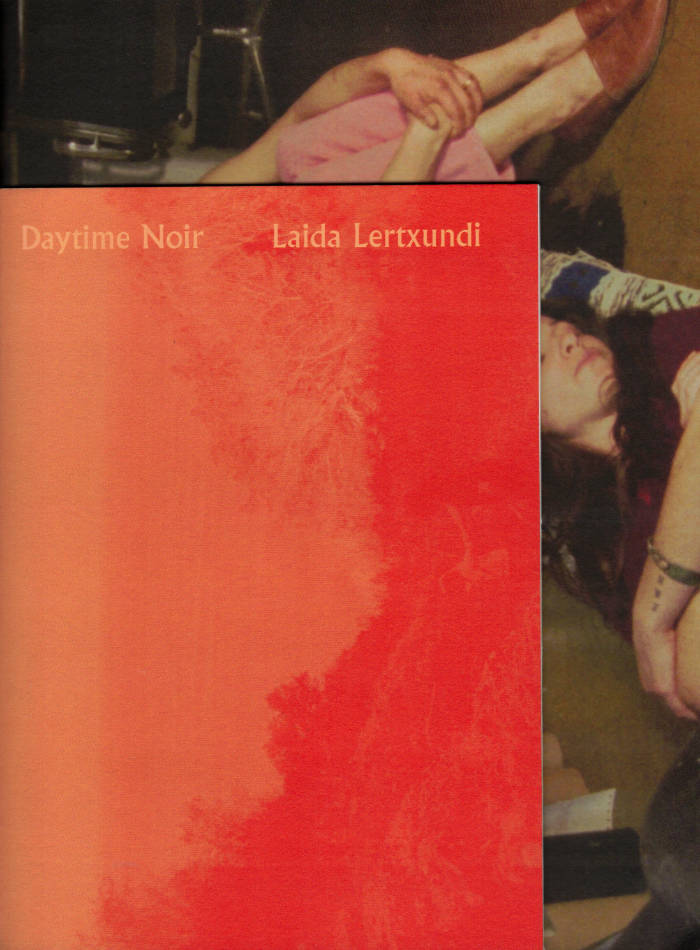
Daytime Noir
Daytime Noir is a limited edition artists book by Laida Lertxundi, designed by Gabrielle Pulgar and released by Artspace Aotearoa on the occasion of Scores for Transformation, the third in the cycle of exhibitions that orbit the question “where does my body belong?” The book includes new writing by Laida Lertxundi, Ren Ebel, and Luna Miguel.
Drawing on two recent 35mm films Autoficción (2020) and Inner Outer Space (2021) as well as recent works on paper, the pubilcation explores the parameters of what it takes to run an artistic practice navigating the many facets of a full life: parenting, teaching, exhibiting, working. The full colour, hand stitched book presents us with ‘film stills’ that come alive when we, as readers, engage with its physical form.
The publication is an edition of 100.

Telling the Truth as It Comes Up: Selected Talks & Essays 1991-2018
An Expert Array of Talks & Essays by One of Our Greatest Living Poets.
One of our greatest living poets, Alice Notley, the author of more than 40 books of poetry, has delivered an expert array of talks and essays over the last three decades.
The publication offers a significant contribution to literature, reimagining the possibilities of writing in our time and the complicated business of how and why writers devote their lives to their craft. Whether she is writing about other poets—Ed Dorn, Allen Ginsberg, Homer, bpNichol, Douglas Oliver, or William Carlos Williams—noir fiction, the First Gulf War, dreams and what they're for, or giving us insight into her own work, Notley's observations are original, sobering, and always memorable. This collection often eschews the typical style of essay or lecture, resisting any categorization, and is consciously disobedient to academic structures in form. The results are thrilling new modes of thinking that may change the ways we read and write.
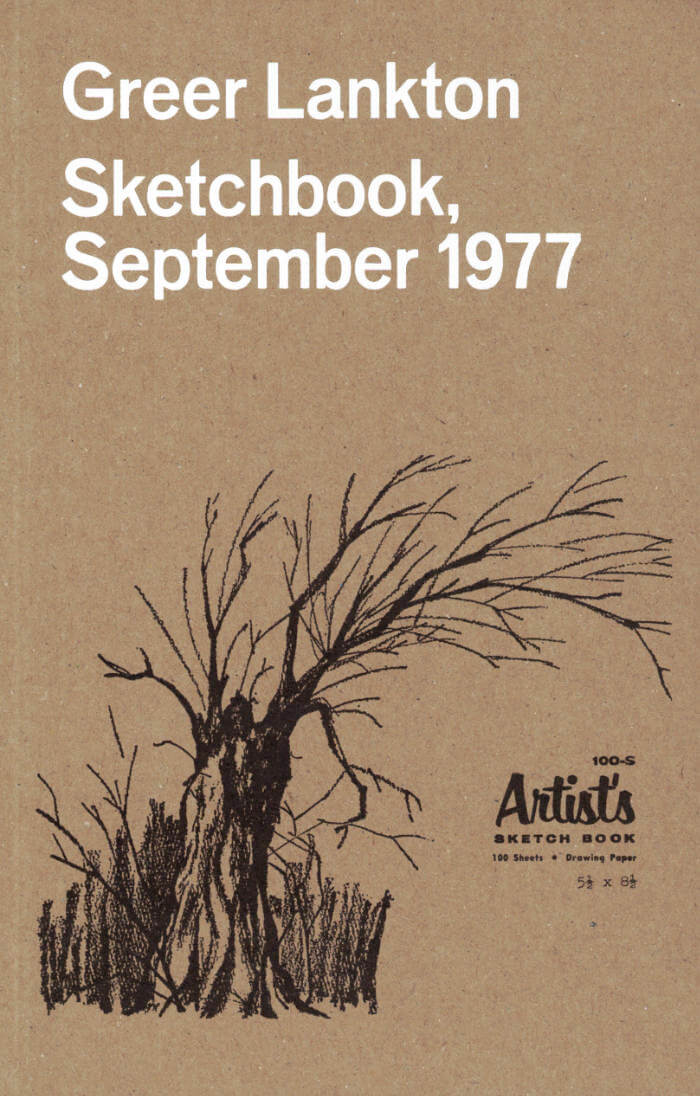
Greer Lankton: Sketchbook, September 1977
A fascinating account of Lankton's inquisitive, sociological and emotional ruminations in advance of her gender-affirming surgery.
This is one of the earliest of Greer Lankton's (1958-96) journals, sketchbooks and daybooks to appear in the artist's archives, and the first to be published in facsimile form. Written during her time as an art student at the School of the Art Institute of Chicago, the journal offers key insights into Lankton's mind at work before her career-defining move to New York in 1978, where she would become an important figure of the East Village art scene in the 1980s and early '90s with her lifelike dolls and theatrical sets.
Containing drawings, behavioral diagrams and aspirational, occasionally confessional writing, the journal is a record of imagining the body and mind reconciled through transformation. In these pages, the 19-year-old turns an inquisitive, sociological eye toward the emotional landscape and somatic effects of the days recorded here; days leading up to her decision to undergo hormone treatment and gender-affirming surgery in 1979. Lankton reflects with raw vulnerability and keen self-awareness on critical questions of self-image, social perception, gender normativity and human behavior.
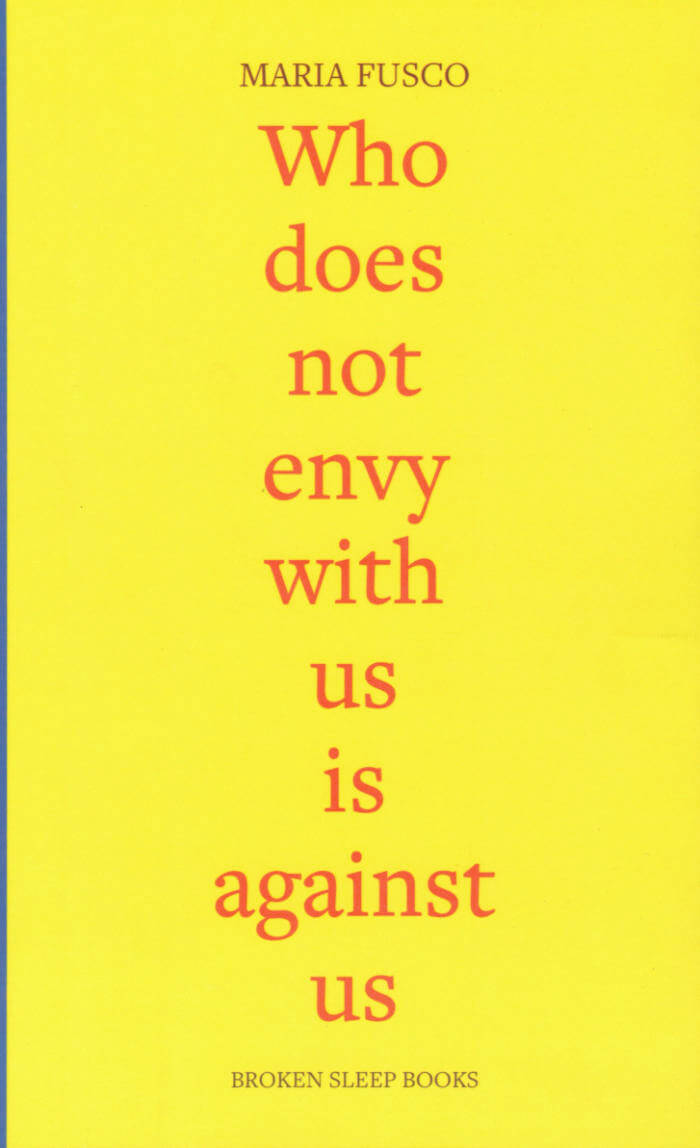
Who does not envy with us is against us: three essays on being working-class
Who does not envy with us is against us is a collection of essays on working-classness that demonstrates Maria Fusco's exceptional talent for weaving together the analytical and the poetic to create an affecting and profound work.
With expressive prose, Fusco deftly captures the experiences of the global working class, illuminating emotions that unite them across borders and lines. This is a tribute to the resilience and tenacity of working-class communities, and an invitation to readers to join in a deeper understanding of their struggles and triumphs. Through her masterful storytelling, Fusco utilises the power of language to elevate the voices of those who have long been silenced, creating a symphony of words that will echo long after the final page.
"I love this book with my entire life and beyond. Fact that I grew up a thousand miles south of Belfast, but, days after reading, feel like I'm - or should be - from there is testament to Fusco's analytic and lyric genius, and her ability to move and affect. Fusco mobilises a previously unnamed mood shared by the international, intergalactic working classes, I've never seen anything like it. Read this book." - Isabel Waidner, Corey Fah Does Social Mobility
.jpg)
Les déserteuses
The first novel by Swiss artist and writer Johana Blanc: haunted by woman figures having voluntarily ended their artistic career in the early 70', and fascinated by their radicality, a young artist asks herself how to carry on with her artistic practice without betraying her idols. Over the course of one evening, during which she attends a series of openings, the story follows her attempt to find her position among a fantasized art world, caught between a paradoxical reality and thwarted ambitions.
Johana Blanc (born 1990 in Paris), a graduate of the Head in Geneva, directs several micro-publishing projects such as the magazine Escalier and Éditions Cacahuète. Her artistic practices include installation and performance art. She also writes and has published several texts, whether collaboratively or not (Wages For Wages Against, Woman Cave).

Togetherward
A volume assembling new and existing documents that revisit, mix and remix moments in the work of artist Christian Nyampeta.
The volume is composed of affections, alliances, appearances, material, and memories that exceed singular authorship, in the form of dedications, documents, elegies, film stills, footnotes, photographs, poetry, presences, and translations. Together they draw a biography of research: the journeys of engaging with art learning and making in, with, and against the worlds of today.
This stream of existing documents is sequenced alongside new contributions by Omar Berrada, Binna Choi, Belinda Kazeem-Kaminski, Natacha Nsabimana, and Isaïe Nzeyimana.
The publication emerges from a close collaboration with GfZK (Galerie für Zeitgenössische Kunst, Leipzig) over the last three years. During this time, two projects were held at GfZK: A Flower Garden of All Kinds of Loveliness without Sorrow, 2018–2019, and Lovers in a Dangerous Spacetime, 2021.
Literature, history, theology and philosophy, as well as insights from experiences and encounters in practice between contemporary art and design percolated into the two exhibitions; public programs; and an ongoing scriptorium, in which the artistic works staged gatherings of artists, theorists and mythologists from Rwanda and further afield who would otherwise never meet.
Titled Togetherward, a word invented by philosopher and artist Denise Ferreira da Silva to describe the rhythm of Nyampeta's method, the volume preludes a series of publications in images, writing, sound, film, and musical recordings that revisit the layers and sediments of the global events of the previous decade—all driven by the burning question of how to live together.
Edited by Vera Lauf and Christian Nyampeta.

About Ed
A moving story about love, AIDS, grief, and memory by one of the most adventurous writers to come out of San Francisco's LGBTQ+ scene.
Bob Glück met Ed Aulerich-Sugai in 1970. Ed was an aspiring artist; Bob wanted to write. They were young men in San Francisco at the high tide of sexual liberation and soon, and for eight years, they were lovers, after which they were friends. Ed was an explorer in the realms of sex. He was beautiful, fragile, exasperating, serious, unassuaged. In 1994 he died of HIV. His dream notebooks became a touchstone for this book, which Glück has been working on for some two decades, while also making his name as a proponent of New Narrative writing and as one of America's most unusual, venturesome, and lyrical authors. About Ed is about Ed, who remains, as our dead do, both familiar and unknowable, faraway and close. It is about Bob too.
The book is a hybrid, at once fiction and fact, like memory, and it takes in many things through tales of political activism and domestic comedy and fury to questions of art and love and experiences of longing and horror. The book also shifts in register, from the delicate to the analytic, to funny and explicit and heartbroken. It begins in the San Francisco of the early 1980s, when Ed and Bob have been broken up for a while. aIds is spreading, but Ed has yet to receive his diagnosis. It follows him backward through his life with Bob in the 1970s and forward through the harrowing particulars of death. It holds on to him and explores his art. It ends in his dreams.

The Apple in the Dark
"It's the best one," Clarice Lispector remarked on the occasion of the publication of The Apple in the Dark: "I can't define it, how it is, I can only say that it's much better constructed than the previous ones."
A book in three chapters, with three central characters, The Apple in the Dark is in fact highly sculpted, while being chiefly a metaphysical book, and in this stunning new translation, the novel's mysteries and allegories glow with a fresh scintillating light.
Martim, fleeing from a murder he believes he committed, plunges into the dark nocturnal jungle: stumbling along, in a state of both fear and wonder, eventually he comes to a remote, quiet ranch and finds work with the two women who own it. The women are tranquil enough before his arrival, but are affected by his radical mystery. Soaked through with Martim's inner night (his soul is in the darkness where everything is created), the novel vibrates with his perpetual searching state of vigil. Often he feels close to an epiphany: "for the first time he was present in the moment in which whatever is happening is happening." Yet such flashes flicker out, so he's ever on the watch for "life to take on the dimensions of a destiny."
In an interview, Lispector once said: "I am Martim." As she puts it in The Apple in the Dark: "All I've got is hunger. And that unstable way of grasping an apple in the dark-without letting it fall."
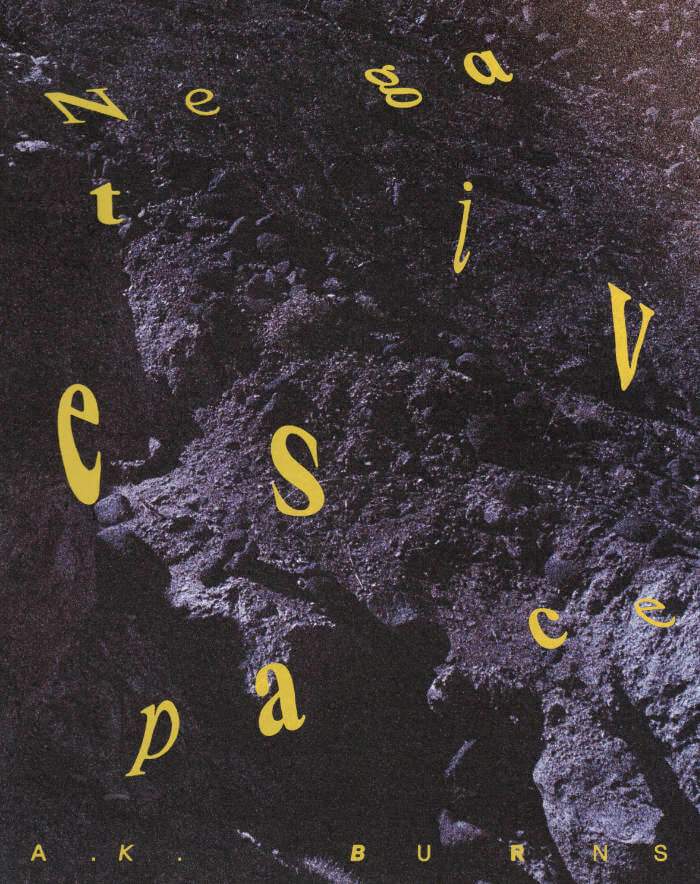
A.K. Burns: Negative Space
Chronicling an epic multimedia project 10 years in the making, A.K. Burns' first monograph grapples with climate change, community and sociopolitical agency
Deploying science fiction, material feminism, eco-anarchism, queer theory and technoscience, New York-based artist A.K. Burns (born 1975) explores the fraught relationships between humanity and nature in an epic multimedia work, Negative Space (2015-23). This nonlinear allegory provokes questions about marginalized bodies, environmental fragility and technology. Developed as a cycle of four video installations, Negative Space imagines new relationships to the spaces we occupy and the impact of our bodies in these spaces through imagery, research and critical and creative writings. Set in a speculative present, the tetralogy envisions a new materialist cosmology wherein hierarchical relations are transformed.
Edited by Karen Kelly and Barbara Schroeder
Text by CA Conrad, Mel Y. Chen, Aruna D’Souza, Megan Hicks, Simone White, and a conversation between the artist and Karen Archey
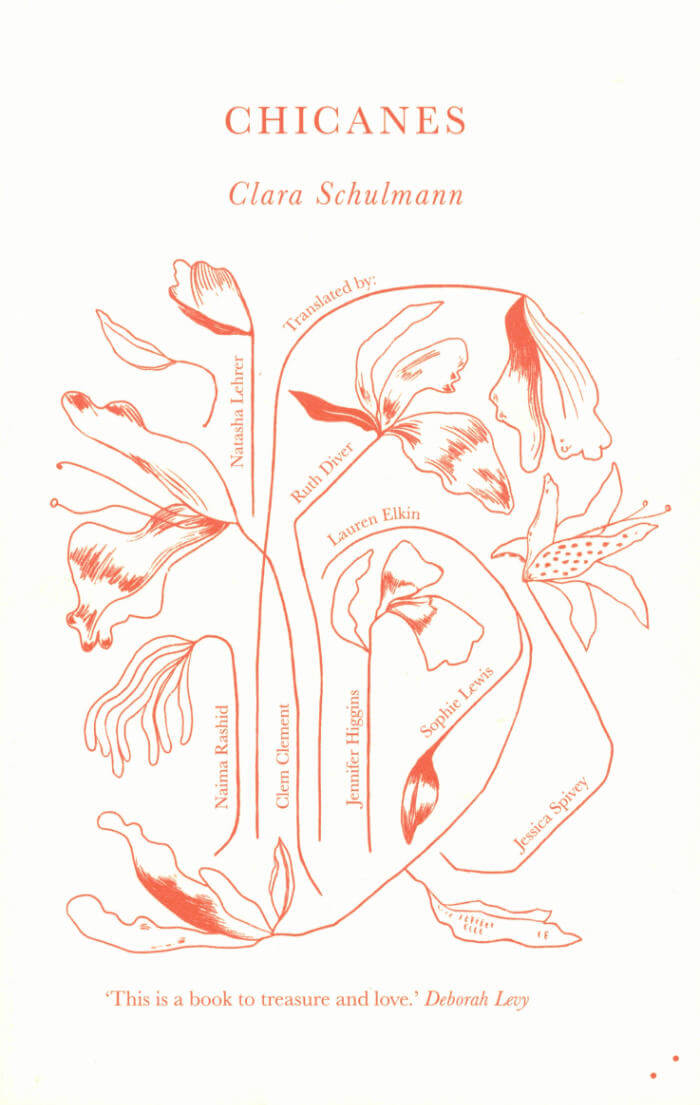
Chicanes
Translated from the French by Naima Rashid, Natasha Lehrer, Lauren Elkin, Ruth Diver, Jessica Spivey, Jennifer Higgins, Clem Clement and Sophie Lewis.
As she tries to collect them for an essay she is planning to write, other women’s words begin interfering in Clara Schulmann’s life — heard on the radio, in podcasts, songs, and films; words of novelists, feminist intellectuals, friends or strangers overheard in the street. They invade her psyche, reshaping the essay that she once had in mind into a picaresque adventure which investigates the fault lines around women’s voices: and in particular those moments of overflow and excess where wayward words take seed.
Chicanes heralds a new French feminism through a meticulously orchestrated chorus of the wildest female voices, from figures in the history of feminist writing to the stranger on the street, blurring the boundaries between body and art; personal and political. A poly-translation, by eight female translators, from established to emerging, Chicanes brings the individual voice of each translator into subtle relief.

Pleasure Beach
Pleasure Beach is a queer love story from the North West’s saucy seaside paradise, Blackpool, on one day: 16 June 1999. Written in multiple voices and styles, Pleasure Beach follows the interconnecting journeys and thoughts of three young women over the course of 24 hours and over 18 chapters which are structured and themed in the same way as James Joyce’s Ulysses.
Hedonist and wannabe playwright Olga Adessi, 19, is struggling along the prom to get to her morning shift at the chippy with a monstrous hangover, trying to remember exactly what happened with Rachel Watkins, 19, a strange and fragile girl she had an encounter with the night before. Former gymnast and teenage mum Treesa Reynolds, 19, is off to the Sandcastle Waterpark with her mum Lou and daughter Lulu, looking forward to a sausage and egg McMuffin on the way.
Pleasure Beach breathes and exhales the unique sea air, fish and chips, donuts and candyfloss scents of Blackpool, bringing to life everything the town is famous for, portraying the gritty magic and sheer unadulterated fun of the city and its people across a spectrum of sensory experiences and emotions.

Commons in Design
The scarcity of resources, climate change, and the digitalization of everyday life are fuelling the economy of swapping, sharing, and lending—all of which are in some way linked to a culture of commoning. In this context, we understand commons as community-based processes that use, collectively manage, and organize generally accessible resources—referring to both goods and knowledge.
Commons in Design explores the meaning and impact of commons—especially knowledge-based peer commons—and acts of commoning in design. It discusses networked, participatory, and open procedures based on the commons and commoning, testing models that negotiate the use of commons within design processes. In doing so, it critically engages with questions regarding designers’ positionings, everyday practices, self-understandings, ways of working, and approaches to education.
Contributors: Rachel Armstrong, Errantry Media Lab (Max Stearns & Nathalie Attallah), Yuhe Ge, Juan Gomez, Luis Guerra, Katherin Gutiérrez Herrera, Cyrus Khalatbari, Rilla Khaled, Cindy Kohtala, Torange Khonsari, Álvaro Mercado Jara, Nan O’Sullivan, Victoria Paeva, Sharon Prendeville, Zoe Romano, Gregoire Rousseau, Daniela Salgado Cofré, Christine Schranz, Elpitha Tsoutsounakis, Eva Verhoeven, Jennifer Whitty

UNLICENSED: Bootlegging As Creative Practice
Over the last few decades the term ‘bootlegging’—a practice once relegated to smugglers and copyright infringers—has become understood as a creative act. Debates about homage, appropriation, and theft that are common in the art world, are now being held in the spheres of corporate branding, social media, and the creative industry as a whole. Today, bootlegging has become fetishized as an aesthetic in and of itself, influencing everything from underground record labels to DIY T-shirts, publishing ideologies, to acts of high fashion détournement.
UNLICENSED contains twenty-one interviews with a range of creative practitioners on the topic of bootlegging. The conversations in UNLICENSED investigate bootlegging’s creative and critical potential, and explore new ways bootlegging can be deployed in order to thrive as an impactful cultural force.
Interviews with: A March Issue (Line Arngaard & Sonia Oet), Babak Radboy, Clara Balaguer & Czar Kristoff, BLESS (Desiree Heiss & Ines Kaag), Boot Boyz Biz, Akinola Davies Jr, Eric Doeringer, Experimental Jetset (Marieke Stolk, Erwin Brinkers, Danny van den Dungen), Elisa van Joolen, Hassan Kurbanbaev, Urs Lehni & Olivier Lebrun, Jonathan Monk, Matt Olson, Online Ceramics (Elijah Funk & Alix Ross), Mark Owen, Printed Matter (Jordan Nassar & Christopher Schulz), Nat Pyper, Hassan Rahim, Shanzhai Lyric, SHIRT, Oana Stanescu
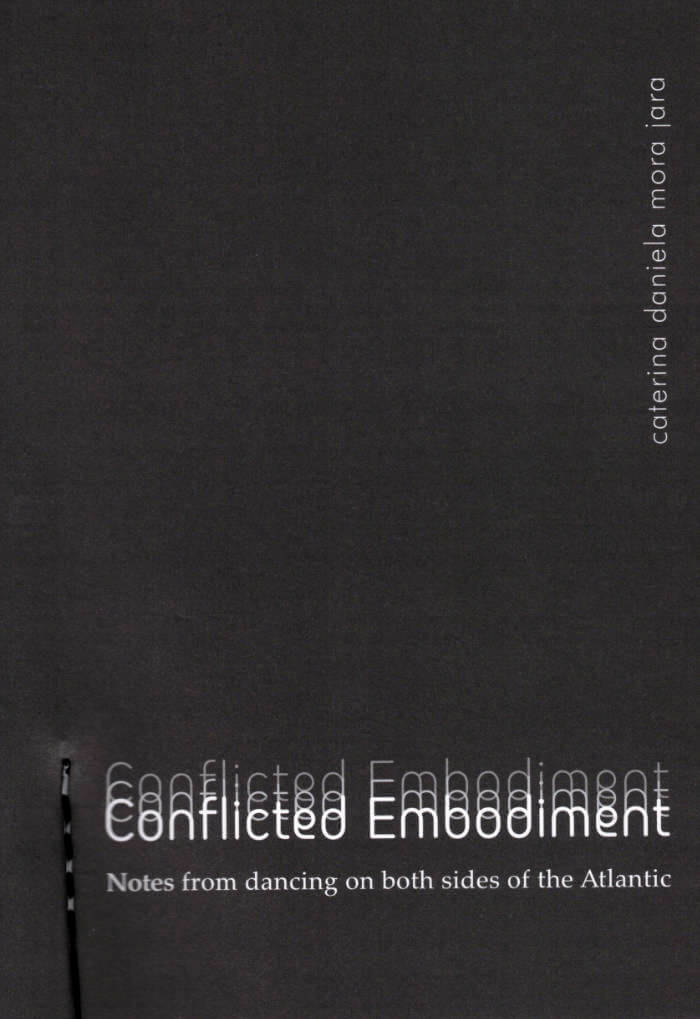
Conflicted Embodiment
Hello readers,
In the essay "Conflict Embodiment. Notes from dancing on both sides of Atlantic" you are holding in your hands, I delve into the research project I am busy with, which departs from the dancing experience in processes of migration.
Frictioning different dance traditions understood as "folkloric", "popular" and "academic" from the souths and norths, these lines inquire about the potential of translation in dances and what mother tongues could be in dancing/performing. By trying to embrace the complexity of the untranslatable, I aim to unfold Conflicted Embodiment as a research device from the question: How does a body navigate migration, colonialism and dancing?
You are warmly welcome to move desacatadamente with me.
cate

Mela Roda Da Fortuna / Half Wheel of Fortune
An inscription of time at the coast, singing crows, albatrosses and seagulls. STOP. Extracted from the earth a whole alphabet. The waves uplifted countries and washed mountains until the storm came undone. The plantation of tobacco was maintained among the meadows and cafes flourished as the core of erudition, the power was theirs - you could see it in cinema- the actors spoke feverishly with enthusiasm, rather than breathless, meticulous and austere. The scars healed on mysterious skin that came out of the shadow to cross the day.

A choreographic lesson for the faint of heart and poets of the here the now the yet to come
This publication presents research conducted by choreographer Mor Demer over two years, in the frame of the exerce MA in choreography and performance (National Choreographic Center of Montpellier / Occitanie). Against the backdrop of her artistic process, Mor Demer unfolds a reflection on the production and configuration of choreographic materials, as well as on the body and the practices and fictions of which it is composed.
Contributions by Anne Kerzerho, Christian Rizzo, Rostan Chentouf, Alix de Morant, Laurent Pichaud, Myrto Katsiki, Jocelyn Cottencin.
Mor Demer is an Israeli-born, Berlin-based choreographer and dancer. She is engaged in a holistic ecosystem of movement and performance practices with solo and collaborative works (she works with Tino Seghal, Meg Stuart / Damaged Good and Peter Player as a dancer and performer). His artistic approach cultivates and engenders states of high exposure, friction, poetics and precision. Mor crosses other forms of artistic expression alongside his dance practice such as writing, drumming, drawing, walking, running and stillness. Her global artistic research is at the crossroads of the profane and the sacred. She explores existential questions, probing endless possibilities in states of being.

Act Like You Know Me
The first comprehensive monograph and critical survey of American artist Pippa Garner, Act Like You Know Me surveys fifty years of her radical and transdisciplinary art practice, from the late 1960s to the early 2010s, through ca. 400 photographs, illustration, ephemera, and original writings.
Encompassing Garner's most iconic works, from the Backwards Car to the Half-Suit, alongside never-before-seen photographs and ephemera, Act Like You Know Me serves to introduce a highly-influential, under-recognized artist whose uncompromising approach to life and practice has allowed her to interact with the worlds of illustration, editorial, television, and art without ever becoming beholden to them.
Published on the occasion of Pippa Garner's travelling exhibition at Kunstverein Munich, Kunsthalle Zurich, Frac Lorraine (Metz) and White Columns (NYC).
Born in the suburbs of Chicago in 1942, Pippa Garner (formerly known as Philip Garner) has satirized American-style consumerism for decades, reifying the joys of everyday life and personal liberation along her way. With her prankish sense of humour and conceptual dedication to experimental engineering, she has altered materials of mass production—from Fordism through the pharmacopornographic era—subverting commercial binaries to reveal the transitory nature of material life and her own transpersonal identity.
Edited by Fiona Alison Duncan and Maurin Dietrich.
Texts by Pippa Garner, Shola von Reinhold, Dodie Bellamy, Fiona Alison Duncan.

Jus d'Orange
A dialogue between Camille Henrot's images and Estelle Hoy's texts, a visual and verbal exploration of melancholy, failure, injustice, and hope.
Since late 2021, the artists, united by a close friendship, have been sharing hundreds of images and exchanging thousands of messages via WhatsApp, Instagram, shared Google Docs, voice messages, and live conversations. Result of this correspondence, Jus d'Orange includes a series of Henrot's paintings inspired by Hoy's texts and vice versa.
This editorial project, developed together with the artists, is thus a homage to this mutual and continual contamination between their works, and to the personal and professional relationship between them.
Published on the occasion of the eponymous exhibition at Fondazione ICA Milano in 2023.

A sound has no legs to stand on
This publication presents research conducted by Berlin-based choreographer and performer Jule Flierl over two years, in the frame of the exerce MA in choreography and performance (National Choreographic Center of Montpellier / Occitanie). This text manages to maintain a sense of orality, of vocality, within a written format. It is at once a description, an analysis, a score, a piece of music, a voice, etc.
Jule Flierl is an artist from Berlin who works with choreography and the voice. Using choreography and somatic singing methods, her scores unsettle the relationship between seeing and hearing: What you see is not always what you hear, and what you hear is not always what you see. Through her work and practices, she proposes that the voice itself is dancing.
Contributions by Anne Kerzerho, Christian Rizzo, Rostan Chentouf, Alix de Morant, Laurent Pichaud, Myrto Katsiki, Jocelyn Cottencin.

Planning prévisionnel Printemps
This publication presents research conducted by visual artist and choreographer Clarissa Bauman over two years, in the frame of the exerce MA in choreography and performance (National Choreographic Center of Montpellier / Occitanie). Here, writing becomes movement, a weaving of words, gestures, images, and drawings that rub against each other in a dialogue articulated from page to page.
"The choreography of small, overlooked gestures from moments of boredom, letting loose, detours. The finger sliding along the table, the arm coinciding with the back of this wooden chair. The coincidence of a gesture with an image, and the instantaneous disparition of this image in the body, as it transforms into the sketch of another movement. Contours, strokes, perspective lines, everything sinuous, asking at what moment does the image appear, emerge, and then become undone? The impossibility, within the body, of an image being fixed, still, one. (…) At this point in the writing, I perceive text less as a desire to organise, sediment, or give form to something, whatever it might be, but rather as a desire to find the outlines of connections between materials left hanging in the room I share with them, the tight space around the table, the images pinned to the walls in front of and behind me, the markings layered, scratched, or sketched in notebooks, the pages from books insistently revisited these last months, the memories that wane, escape, or insinuate themselves between these spaces. Developing a strategy for distracted observation."
Contributions by Anne Kerzerho, Christian Rizzo, Rostan Chentouf, Alix de Morant, Laurent Pichaud, Myrto Katsiki, Jocelyn Cottencin.

Zoë Lund: Poems
Poems presents four unpublished poems by American writer and actress Zoë Lund (1962–1999), written in the 1980s. An incandescent voice emerges, revealing the might, sincerity, and precision of her expression, as well as her vulnerability and defiance in the face of death. This is the first publication dedicated to her work.
Translated into French by Stephanie LaCava and Manon Lutanie, and presented in a bilingual volume (English, French), the poems are introduced by Stephanie LaCava, who retraces their genesis and examines the personality of their author:
"She is unsure of her identity, but hints at certain proclivities: action as the only true form of activism (sustained readiness to strike); a taste for contradictory characters (strength exists where there is also cowardice); romance. [...] Uninterested in mute beauty, Lund wanted to write and produce her own projects. In a news clipping from 1983, titled 'Young Political Filmmaker Shooting at Mount Holyoke,' there is a striking picture of Lund 'working on a film about the radicalization of a young woman,' per the caption. The article talks of her 'uncompromising idealism' and feelings about the naïveté of both American liberals and leftists.
Three years later, in 1986, 'Touchstone Levity' was written, and [...], the same year, "Opium Wars." The latter speaks to Lund's interest in drugs (she had a taste for heroin and would die of heart failure at thirty-seven)."
Printed offset in Italy on a matte, natural paper, stapled, the book also features black-and-white pictures of Lund taken in Paris by the filmmaker, critic, and activist Édouard de Laurot, then the author's partner, in the early 1980s. It's striking to see her in Paris on these images, smoking and posing in front of the Eiffel Tower, disheveled in a nightclub, caught on camera at a shooting range, at such a young age—when we know she would die in Paris fifteen years later. It seemed right to choose these images to accompany the poems, which were written in the same decade, and in the context of this French-American publication.

Artless: Stories 2019-2023
Composed of stories, fragmentary essays, and even press releases Stagg has been commissioned to write, Artless captures the media landscape lived and generated in New York during the past half decade. Since the 2016 publication of her debut novel Surveys, Stagg has positioned herself as an in-demand expert on, and critic of, the psychic experience of self-mythology within the cruelly optimistic metaverse of infinite branding. Part voyeur and part participant, Stagg continues her exploration of the branded identity and its elusive, bottomless desire for authenticity.
Natasha Stagg is the author of a novel, Surveys, and a collection, Sleeveless: Fashion, Image, Media, New York 2011-2019. Her essays have appeared in the books Excellences and Perfections, Link in Bio: Art After Social Media, You Had To Be There: Rape Jokes, Intersubjectivity Vol. II: Scripting the Human, and 9th Berlin Biennale for Contemporary Art: The Present in Drag, among others.
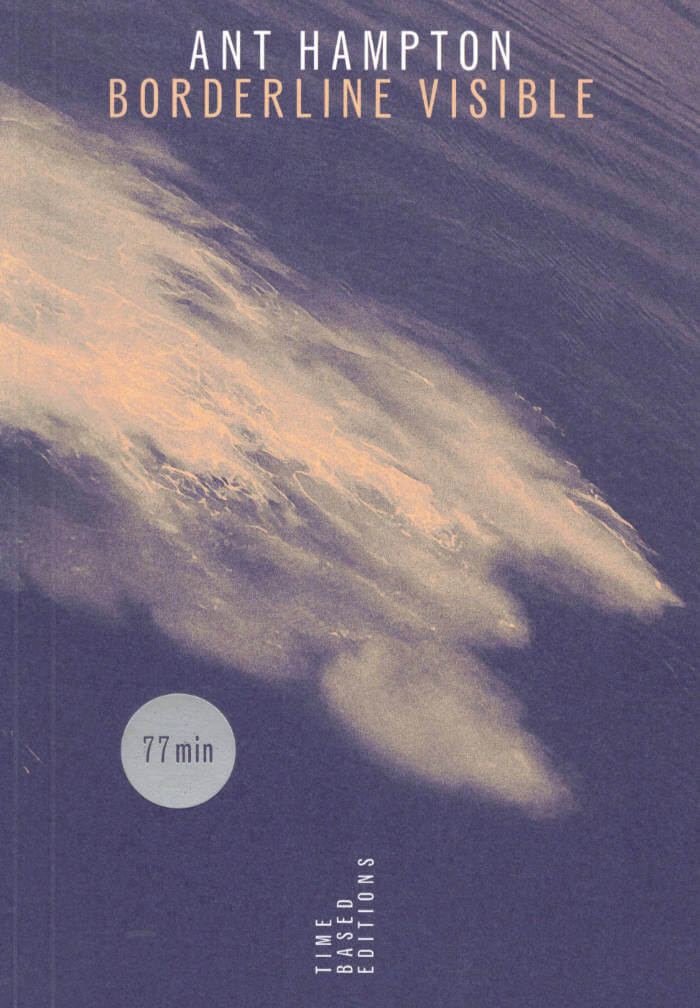
Borderline Visible
Borderline Visible begins as a journey from Lausanne to Izmir in 2022 by two artist friends, one of whom experiences health problems halfway and has to stop. As the other continues towards Turkey, suddenly alone, the narration grows into a moving and troubled psychogeography as it shifts between “we” and “I”, present and past, piecing-together value and meaning from the very human ruins of aspiration, history, and language. Ant Hampton’s careful, at times miraculous, process of reconnection gradually lights up a constellation: voices and earthquakes, the Sephardic diaspora, tourism and forced movement, breakdowns and dementia, the end of the Ottoman Empire, swifts and swallows, Eliot’s The Waste Land and an urgent insight into hidden atrocities at the edge of Europe being funded from its centre.
Borderline Visible is created by the artist Ant Hampton, who is also co-director of the Time Based Editions series. With a deep focus on liveness, his performance work since 1999 has often involved guiding people through unrehearsed situations using automated devices and a subtle use of instructions and narration.
As with all Time Based Editions, an audio track combines narration, soundscape, and instructions that guide you over a given time through the book.

The Subtle Rules The Dense
Moulded from clay, between 2021 and 2023, The subtle rules the dense is a series of ceramic chest plates, by the artist Phoebe Collings-James. Inspired by Makonde and Yoruba body masks and Roman muscle cuirasses, the sculptures explore the interplay between ritualistic objects’ violent histories and their contemporary presentation as fetishistic ornaments. This publication brings together responses to the series from artists SERAFINE1369 and Rehana Zaman and geographer Professor Kathryn Yusoff; exploring layered references to tarot, Shakespeare and post-colonial theory; probing the materiality and extractive politics of geology; and reflecting the plural multifaceted nature of Collings-James’ practice.
A series by Phoebe Collings-James
With Texts by Serafine1369, Rehana Zaman, Kathryn Yussof.